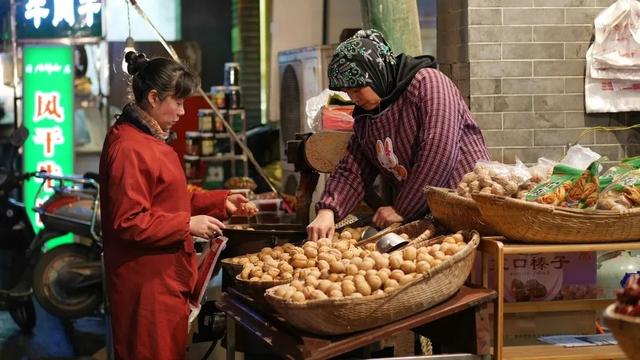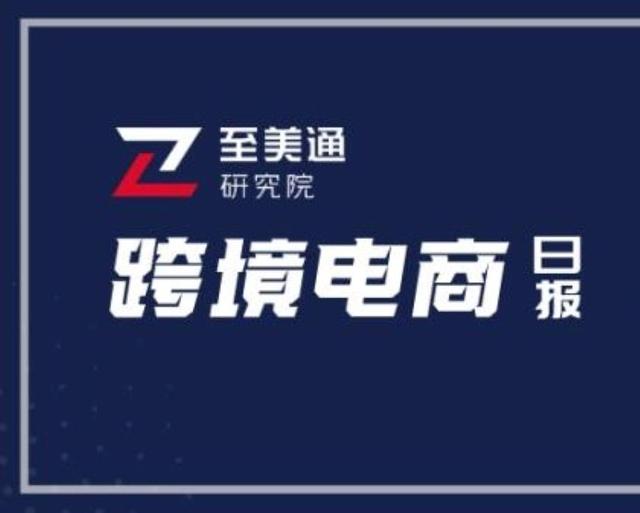双语|博鳌亚洲论坛研究院举行研讨会 详解疫情对中国经济及全球供应链的影响
2月28日上午,博鳌亚洲论坛研究院在京举行《疫情防控与经济发展》远程研讨会。来自国际组织、发起国使馆、理事咨委、会员、合作伙伴、媒体合作伙伴的80多位代表,通过视频会议的形式出席研讨会。17位身处经济、生产和疫情防控一线的企业家、经济学家、媒体主编,就疫情对经济的影响、疫情防控与经济发展如何统筹兼顾、哪些新技术新业态可以发挥重要作用等重点发言。
嘉宾们认为,疫情在中国国内已经得到初步有效控制,复工复产有序进行;疫情不会改变中国经济长期向好的势头,对农业、服务业、制造业的影响是短期的、暂时的。政府应采取及时、积极、有效的财政和货币政策,把稳就业放在优先位置,通过减税、让利、补助、社保缓缴和定向精准的货币政策,帮助受影响的企业、尤其是中小微企业度过难关。同时,着眼长远,继续坚持深化改革、扩大开放不动摇,加大对5G、大数据、云计算、人工智能、区块链、工业机器人、自动化、无人机、自动驾驶等新技术的研发、应用,鼓励发展智能工厂、智慧城市、远程协同办公、在线教育、医疗、生活服务等新经济、新业态。
嘉宾们也对疫情在中国之外的全球蔓延势头表示担忧,尤其是在公共卫生体系薄弱的国家,呼吁加强疫情防控的国际合作,共同应对这一全球性挑战。在经济层面,应加强各国政策协调,共同维护全球供应链的正常运行,将疫情对经济的影响降到最低点。
主要观点如下:
一、服务业、劳动密集型行业、中小微企业、中低收入人群受冲击最大
《财经》杂志执行主编张燕冬说,此次疫情,占中国经济53.9%的服务业受冲击最大、恢复速度也相对较慢。餐饮业一季度负增长30-40%,全年预估增速为负。房地产一季度负增长10-20%,全年预估增速在负1%到1%之间。交通运输3月份缓慢回升,全年增速预计只有5%。
腾讯智酷负责人王冠说,对全国网民消费行为的调查表明,外出餐饮、外出购物、院线、春运出行下滑最大,幅度50%-90%。其次是旅游、外出锻炼健身、美容美发、KTV、棋牌桌游、线下培训、线下看房,下滑幅度在10-50%之间。
国泰君安首席经济学家花长春认为,复工复产率低于预期。从数字看,规模以上企业复工率60%-90%,中小企业30-35%,但从电力数据看,复产率较低。《21世纪经济报道》执行主编晨星也认为,截至2月底,复工情况并不理想。中国企业联合会对中国制造业500强的调查表明,产能利用率只有六成左右,恢复正常还需要较长的时间。
中国人寿战略规划部总经理罗朝晖认为,疫情对中小微企业的冲击,超过了以往任何一次突发事件。这是由中小微企业目前的数量决定的。中国中小微企业占企业总数的90%。受疫情影响最大的几个行业,如批发零售、餐饮住宿、物流运输、文化旅游,中小微企业占比相当高。其次,中小微企业一般处于供应链的底端,抗风险能力弱。一有风吹草动,中小微企业最先受到影响。第三,此次疫情是新中国成立以来传播速度最快、感染范围最广、防控难度最大的一次突发卫生事件。第四,中国国内疫情防控在向好的态势转变,但海外疫情扩散加剧。如果海外疫情不能尽快有效控制,将通过全球供应链,反过来影响中国中小微企业的发展。
晨星表示,从事劳动密集型行业的中低收入人群受损突出。长江商学院对一千多家企业的调查表明,从事餐饮、旅游、住宿、生活服务等行业的企业,员工收入可以保持全薪的只占70%,16%以上的企业降薪超过50%。蚂蚁金服对于2万多家小微企业的调查表明,超过八成的小微企业、个体经营者受此次疫情影响较大,资金问题突出。复工的最大挑战也来自于这些企业。不能正常复工,将进一步加剧中低收入人群的失业和民生问题。
泰国正大集团资深执行副董事长谢毅说,农业、食品业是关系国计民生的大事,受疫情影响,农产品生产和销售也面临不少困难,传统的产供销模式面临挑战,农资、农产品运输不畅,农民工短缺,用工难、用工贵问题突出。国家第一时间出台了很多支持性、保护性政策措施,开通绿色通道保民生、保供应、稳市场。总体上,农产品生产受到的影响较小。
谢毅建议,疫情过后,应鼓励通过自建和整合社会资源共建的方式,构建从种子、种植、饲料、养殖到屠宰、食品加工、物流、零售、餐饮的全产业链,真正做到“从农场到餐桌”的全产业链模式,增加农业和食品业的抗风险能力。

二、全球供应链重组加速
晨星说,疫情对全球供应链、产业链的影响,取决于企业能否顺利复工复产。从目前看,科技型制造业复工率不高,存在复工复产难、订单交付难、贷款收回难等问题。汽车行业面临困难比较突出。武汉开发区打造的“中国车都”,是中国汽车零部件集中的区域,所受影响很大。
花长春认为,过去几年,降低库存水平、提高资金使用效率,是企业的普遍做法。现在看来,在供应链不断受到冲击的情况下,库存水平过低,稍有风吹草动就会产生很大的问题。经历此次疫情,企业可能会考虑提高库存水平。
清华大华中美关系研究中心执行主任鲁俊群说,此次疫情是全球供应链对中国企业的压力测试。世界汽车巨头为规避区域突发事件造成的供应链风险,有可能对其全球产业链进行重新布局,从而推动全球汽车格局的洗牌。建议加大对全球供应链的课题研究,为政府决策提供数据、信息支撑;有条件的地区,区分不同的风险等级,在做好充分疫情防控的前提下开展复工复产,力争稳定中国企业在全球供应链的份额和地位,减少损失;积极开展国际合作,打通自身的全球供应链;积极打造制造产业集群共同体,完善产业链。
晨星表示,中国不是单纯的生产者,也是全球最大的消费者。中国生产同时满足国内国外市场的需求,所以,产业链发生转移的情况不可能大规模发生;产业链的重组也将以中国为中心,紧密围绕亚洲,亚洲在全球供应链、价值链中的地位将更加巩固;随着中国制造业向中高端转型,将进一步强化亚洲经济体与中国的产业联系,中国价值链的亚洲区域属性将进一步加强。
韩国现代汽车中国政府事务部部长王瑾认为,全球汽车业对中国的汽车生产力、市场购买力依存度很高。中国完善的工业生产体系、安定的政治局面、良好的营商环境,使中国制造对跨国企业产生巨大黏性。对于跨国公司来说,供应链转移并非易事,要考虑当地政局、营商环境、工人素质、物流成本。即使迁移东南亚,也离不开中国供货,中国汽车零部件企业超过十万家,可以提供1500种产品。从长期来看,此次疫情不会影响跨国公司的全球布局,不会导致供应链大幅度外迁。
作为短期应对,跨国车企应适当保有零部件库存、寻找替代供应商、帮助原有供应商尽快复工复产、加强质量监控,将疫情对供应链的影响降到最低。
德勤中国首席经济学家许思涛建议,中国应通过进一步扩大对外开放,应对全球供应链的重组,把握机遇,掌握主动。比如,进一步放宽汽车行业的股比限制,坚定外资车企在华投资的信心。

三、数字经济、新经济逆势增长
中国银行高级研究员李佩珈说,资本密集型、技术密集型企业受冲击相对较小,包括计算机通信、高端制造等,其抗风险能力整体较强。卫生医疗、在线教育、远程办公等新业态加速成长,电商等线上消费逆势增长。
京东数科首席经济学家沈建光说,此次疫情,一些新的技术得到广泛应用甚至供不应求。比如,京东开发的疫情管控全智能APP,全面采集人口移动、交通、医疗等信息,只要发生一起病人确诊,就可以通过大数据,迅速发现与他有交互的潜在风险人群,节省大量人力物力,提高防控精确度,受到政府欢迎。
无人运货机器人得到广泛使用,最大程度减少人与人的接触,降低快递员的风险,可以直接送达小区门口。在封城和封路的农村地区,由于无人机的使用,网上销售不降反升。此外,运用刷脸等“无触”支付手段的无人超市、应用于疫苗管理的区块链技术、服务于中小微企业的线上数字金融,都在此次疫情中展现出广泛的应用潜力。
王冠说,疫情期间线下消费减少,但线上消费增长明显,一定程度上弥补了需求端损失。比如生鲜电商平台、在线视频、手机游戏、小说、线上培训等。
波士顿咨询全球合作人周园指出,对于互联网企业、数字化企业、医疗生产服务企业、环保企业、智能制造来说,疫情危中“蕴”机。经历此次疫情,传统企业将认真考虑、着手、加快数字化转型。政府应着眼这一轮数字化、线上化带来的机遇,精确施策,推动产业生态的整合提升。

四、房地产行业风险加大
建行研究院首席专家杜要忠认为,房地产市场受疫情冲击较大,更加凸显了房地产行业长期存在的问题,房地产行业的转型需求更加迫切。
杜要忠说,房地产企业面临偿债高峰期。2020年,房地产行业需要偿还债券总额7598亿,上半年就有3000亿到期。疫情冲击加剧了房地产开发企业资金紧张状况,尤其是春节期间,交易量大幅下滑,现金流更加困难。
从供给看,48个城市春节期间新开工量较疫情爆发前一周下降95%,各地项目开工复工延迟,都会对后期新增供应产生影响。需求方面,春节期间销售大幅回落,全国30个大中城市商品房成交面积较2019年同期下滑86%,线上售房打折促销收效甚微。
经营性不动产遭遇严峻考验,零售、写字楼、酒店等商业地产面临较大困难。春节本是消费旺季,本该现金流充裕的零售商业不得不关门歇业,租金成本负担沉重。原本就供过于求的写字楼市场,需要较长时间消化疫情带来的影响。旅游业停摆,使酒店、餐饮空置率大幅上升。
住房租赁企业面临较大的经营压力。大多数长租企业轻资产运营,房源都是租来的。受疫情影响,退租或要求降低租金的情况是可能的,长租公寓也采取了阶段性减免租金的措施,维持租赁合约、降低空置率。但是,疫情期间收入下降、运营管理成本增加,使长租企业短期内现金流明显减少,日常运营更加困难。
房地产行业风险向金融领域溢出的可能性值得关注。疫情爆发之前,就已存在经济增长、财政收入过度依赖房地产行业、金融资源向房地产行业高度聚焦、居民住房杠杆率较高等问题。疫情当前,需要重点关注房地产企业面临的资金链压力、在建项目停工以及居民收入下降造成的违约风险。
杜要忠建议,在坚持房住不炒、因城施策等基本政策方向不变的前提下,下一步要做的是优化房地产市场结构,供给端既重增量,又重存量;需求端,引导租赁需求。应加大住房金融创新力度,着力降低房地产金融领域的风险集中度,推进住房租赁资产证券化业务。

五、稳就业的财政政策
许思涛建议,在财政与货币政策之间,应更加重视财政政策的作用;财政政策的重点,应该是稳就业。长江商学院副院长周立表示赞同,认为财政政策应该以保就业、保民生为主,避免大水漫灌而造成经济的扭曲。
韩咏红介绍了新加坡的做法。她说,新加坡政府最新推出的预算案,投入40亿新元,首要目标是保就业。对于月薪1.6万人民币的中低收入员工,政府向雇主提供为期三个月、相当于薪资8%的补贴,鼓励企业不要裁员。新加坡政府的核心思想,不是奢望可以毫发无损地度过危机,而是如何在疫情过后成为最早、最快复苏的国家。
花长春说,财政用于减税降费、疫情防控、贷款贴息方面的支出已超万亿;地方财政资金紧张,积极财政政策的空间有限。在此情况下,财政赤字突破3.5%、专项债额度提升,应该是大概率事件。不搞大水漫灌、不搞房地产,作为方向和大原则是对的,但在需求疲软的情况下,仍有必要通过基建等方式,缓解企业困境和就业压力。

六、定向精准、雪中送炭的货币金融政策
李佩珈分析,受疫情影响,企业融资需求不断走弱。但是,疫情催生了线上零售、在线教育、远程办公等新业态加快发展。总体看,企业融资需求和信贷将呈前低后高、结构分化、逐步企稳的态势。
短期看,批发零售、住宿餐饮、物流运输、旅游等服务行业、高杠杆企业、房地产企业、中小企业的现金流面临较大挑战。金融政策要以缓解企业、尤其是中小企业当期债务压力、防止现金流断裂为重点。
下半年,随着逆周期调控措施陆续出台、到位,基建领域的融资需求将加快增长。除传统基建外,信息基础设施、公共卫生基础设施的融资需求都会进一步增长。
资本密集型、技术密集型企业受疫情冲击较小,信贷需求稳定增长。医疗卫生、在线教育、远程办公等新业态的信贷需求逆势增长。
旅游、购车、购房等居民传统消费大幅减缓,但在线零售等新消费逆势增长。下半年或疫情控制之后,消费领域有望出现V型反弹,但难以恢复到去年同期水平。全年消费不是特别乐观。
李佩珈认为,此次疫情对经济的冲击大于2003年非典,货币政策要旗帜鲜明地发挥逆周期调控的作用,最大程度降低疫情的影响,综合运营降息、降准工具,帮助企业恢复现金流。目前形势下,降息更为重要,要进一步调低存款基本利率。
降息的同时还要降准。由于企业现金流增长困难,导致企业存款增长缓慢,金融机构融资能力受限,需要通过降准的方式,缓解金融机构的流动性压力。
货币政策要更加注重发挥结构性定向工具的作用,引导金融机构增加对制造业中长期贷款、民营企业中长期融资,帮助他们复工复产。通过财政贴息等方式,鼓励金融机构出台更多的贷款展期政策,缓解中小企业当期债务偿还压力。通过专项基金等方式,多渠道扩大企业资金来源。对疫情影响较大地区的金融机构,提高不良贷款容忍度。
罗朝晖认为,解决中小微企业融资难、融资贵的问题,必须精准施策,单一模式是解决不了的,建立多层次的融资体系是关键。既要有银行,也要有小贷机构;既要有持牌机构,也需要民间融资。民间借贷是小微企业融资重要渠道,可以借助大数据等技术,加强民间融资监管,在加强监管的基础上,适当放活民间融资。同时,进一步挖掘银行信贷潜力,基于小微企业资质不高、抵押不足的特点,借鉴参考融资担保民间借贷的有效做法,允许小微企业异地房地或近亲不动产作为担保等等。也可以供应链金融的方式,为央企、大型企业产业链上的小微企业提供融资支持。
保险资金可以发挥作用,比如,认购中小微企业的金融产品;通过股权质押等方式,向中小微企业的股东提供债券融资等。大力发展“营业中断责任险业务”,以事后经济补偿的方式,保障小微企业度过难关。

七、疫情全球蔓延、资本市场波动加剧
周园说,波士顿咨询最新的一份报告,就新冠病毒的演变设想了三个场景。一是快速得到控制,除湖北以外,全国其他地区三四月份恢复正常,湖北省年中启动疫后重建。二是长期共存,由于病毒扩散范围广,源头与传播链没有确认,短期无法彻底清除,未来可能不定期再爆发。第三个可能是全球大流行。上周发布报告的时候,这个可能性还比较低。现在看来,越来越令人担忧。由于各国防疫卫生体系参差不齐,不能像中国政府这样采取强有力的措施,一旦疫情爆发,将很难有效控制。
花长春说,全球主要股市近日大幅下跌,主要原因就是疫情的海外蔓延。欧美投资者普遍担心,没有一个国家具有中国这样的体制优势,可以将疫情有效控制住;治疗药物半年之内难以投入临床。如果美国、欧元区疫情蔓延,全球经济前景将十分黯淡,这是资本市场悲观和过激反应的主要原因。
花长春建议,货币政策要对资本市场的波动有所反应。资本市场的波动,可能引发系统性、连带性风险,连带经济加速下行。在此情况下,降低存款基准利率非常必要。

八、反思与教训
嘉宾们认为,此次疫情有许多教训值得总结,要将生物安全的重要性提升到战略高度。远大集团董事长张跃认为,由于来源不明、人传人、无国界等特点,病毒传播对经济安全、国家安全的风险不容低估,未来甚至有被恐怖分子利用的可能。国家应加大力度,防患于未然,从源头上加强防控。比如,随着气候变化、全球变暖,永久冻土解冻,新的病毒可能随之释放,风险很大。这方面,国家须提前防控。
应对疫情的物理隔离有效但成本巨大,针对病毒的疫苗具有滞后性,跟不上病毒的变异。国家应加大科研投入,以技术手段隔断病毒传播。比如,瘟疫史表明,多次瘟疫都在五月份减弱或消失,证明阳光、紫外线、臭氧在控制微生物方面发挥作用。这一自然现象对我们的启示是,在人群聚集的公共建筑、大型楼宇、酒店、汽车、火车、飞机等公共环境,使用臭氧进行消毒、应用全新风通风系统,可以有效隔断病毒的广泛传播。
张燕冬认为,此次疫情表明,公共管理、公共卫生体系亟待加强、完善。与发达国家相比,中国公共卫生领域的投入仍存在很大差距。周园建议,应致力于构建更有韧性的社会体系,推动建立高效、公开、透明的应急防控、便民服务数字化治理体系。
以下为本次研讨会嘉宾观点集萃英文版:
BFA Academy on-line Seminar on “COVID-19 & Economic Growth”
Executive Summary
The BFA Academy held an on-line seminar on “COVID-19 & Economic Growth” on February 28 in Beijing, China. More than 80 delegates from international organizations, embassies of BFA Initial Countries, Board of Directors, Council of Advisors, members and partners attended this video seminar. 17 CEOs, economists and media editors made presentations on the immediate and medium-term implications of COVID-19 on economic and social development.
Speakers agree that COVID-19 has been brought under initial control in China. Businesses are getting back to normal gradually. The long-term prospect of the Chinese economy remains positive. Implications on agriculture, services and manufacturing are short-term. Fiscal and monetary policies must be timely, proactive and targeted. Employment should be the top priority. The government needs to reach out to enterprises adversely affected by the COVID-19 through tax break, subsidy, deferral of social welfare contributions and targeted monetary policies to help them out of hardships, in particular small and medium-sized enterprises (SME). Meanwhile, China should stick to the policy direction of deepening reform and opening wider to the outside world. More inputs should go to emerging technologies such as 5G, big data, cloud computing, AI, blockchain, robots, automation, drones and pilotless driving. Emerging businesses such as smart manufacturing, smart cities, office on-line, on line education/healthcare and O2O life services should be encouraged.
Speakers expressed deep concern over the spreading of COVID-19 outside China, particularly where public health systems are weak, calling for enhanced international cooperation fighting COVID-19 as a global challenge. Governments are urged to safeguard the global supply chain through effective policy coordination and minimize the impact on the world economy.
1. Services, labor-intensive sectors, SMEs and low-incomers are the hardest hit
Zhang Yandong, Managing Editor of Caijing Magazine, said that the services sector, accounting for 53.9% of China’s GDP last year, are the hardest hit and may take longer to recover than other segments of the economy. Restaurants, for example, will drop by 30-40% in Q1. Real estate will drop by 10-20% in Q1. Transport will start to pick up slowly in March, but may not exceed 5% for the whole year.
Wang Guan, Head of Penguin Intelligence, Tencent, quoted an on-line survey of Chinese consumers, which showed a 50-90% drop in dining out, shopping, going to cinema and transport, and a 10-50% drop in tourism, fitness, hair & beauty, Karaoke, training and real estate brokerage.
Hua Changchun, Chief Economist of Guotai Junan Securities believed that business are getting back to normal as quickly as expected. Figures show that 60-90% of large enterprises and 30-35% of SMEs have resumed businesses. But power consumption shows less-than-expected utility of production capacity. Chen Xing, Managing Editor of 21stCentury Herald, concurred by quoting a survey of China Enterprise Confederation of Top-500 Chinese Manufacturers, which shows only 60% of production capacity are utilized by far.
Luo Zhaohui, General Manager of Strategic Planning, China Life said that SMEs are adversely affected by the COVID-19 more than any other emergency in the past. This is because SMEs have accounted for 90% of enterprises in China. Unfortunately, they are heavily concentrated in the hardest-hit segments this time, such as wholesale/retail, restaurants/hotels, logistics/transport, entertainment/tourism. SMEs mostly lie at the lower end of the supply chain, more vulnerable to risks than their bigger peers. COVID-19 is by far the fastest-spreading, most contagious and hardest-to-prevent/control public health emergency in the history of PRC. Though it has been brought under initial control within China, globally it is spreading faster than expected. If not contained quickly and effectively, it may adversely affect SMEs in China through the global supply chain.
Chen Xing said that low-incomers in labor-intensive sectors are hit hard. CKGSB has conducted a survey of more than 1000 enterprises, which shows that no more than 70% could retain the same wage level as before COVID-19 while 16% has a wage drop by 50% or more. Ant Finance made a survey of more than 20000 small and micro-enterprises, which shows that over 80% are hit hard with particular difficulties in cash flow. Their failure to resume business will only exacerbate the jobs and livelihood of low-incomers.
Xie Yi, Senior Executive Vice President, CP Group said that agriculture and food industry, a segment of national strategic importance, is also facing hardships in production and sales. The traditional business model in production, supply and sales proves rigid and inflexible. Agricultural machines and products find it hard to ship out. Agricultural workers are in short supply. Labor costs rise. The government has unveiled a number of supportive and safeguard measures. Overall, agricultural production remains stable and reliable.
Xie Yi suggested that the “Farm-to-Table” supply chain model be encouraged in China post-COVID-19, all the way from seeds, planting, feed, husbandry to butchering, food processing, logistics, retail and restaurant. Such a model will enhance the ability of agriculture and food industry to defuse risks in the future.
2. Global supply chain will evolve faster than expected
Chen Xing said implications of COVID-19 on the global supply chain depends on the progress of enterprises resuming production. For now, technology-intensive manufacturers are slow in going back to business, fulfilling orders and repaying loans. The auto industry faces hardships. The Wuhan Development Zone, China’s “Auto Capital” where more than 1000 auto parts factories are located, is adversely affected.
Hua Chanchun said that enterprises tending to maintain low inventory levels may now consider raising the level. Given that the supply chain faces more shocks and emergencies, too low an inventory level must expose enterprises to the risk of supply chain fragility.
Lun Junqun, Executive Director, China-US Relations Center, Tsinghua University compared the COVID-19 to a “stress test” of global supply chain on Chinese enterprises. Major auto makers may need to restructure their global supply chains to guard against future risks posed by similar emergencies. He suggested that more in-depth and extensive research be done on the global supply chain, and provide necessary data and information for government decision-makers. Provinces and cities should resume production with due COVID-19 control measures in place so as to stabilize China’s share and role in the global supply chain.
Chen Xing said that China is not just a global producer, but also a major global consumer. China produces to meet demand both at home and abroad. It is not possible to see massive relocation out of China. Restructuring of global supply chain will be China-centered and Asia-centered. The status and role of Asia in the global supply chain and value chain will only be strengthened. As China moves up the value chain, Asian economies will only see enhanced ties with China, not less.
Wang Jin, Director of Government Affairs, Hyundai Motor believed that the world auto industry relies highly on auto production and sales in China. China has the most comprehensive industrial system in the world, political stability and business-friendly environment, which remains highly attractive to MNCs. It is not an easy thing for MNCs to relocate its supply chain given challenges in political stability, business environment, quality and skills of workers, and logistics elsewhere. Even if they relocate to Southeast Asia, MNCs still need to rely on Chinese suppliers for raw materials and intermediates. From a long-term perspective, the COVID-19 will not result in massive relocation out of China.
For the short run, MNCs in the auto industry should maintain a proper inventory level, search for alternative suppliers, help existing suppliers resume production, enhance quality control and minimize the implications of COVID-19 on the supply chain.
Xu Sitao, Chief Economist, Deloitte China suggested that China respond to the global supply chain restructuring by opening wider to the outside world. For example, it may further relax shareholding restrictions on automobile joint ventures so as to reaffirm MNC’s confidence in the Chinese market.
3. Digital Economy and New Economy grow robustly
Li Peijia, Senior Economist, Bank of China, said that capital-intensive and technology-intensive segments are much less affected, such as IT, advanced manufacturing. Healthcare, emerging businesses such as on-line education and office line, and on-line consumption such as e-Commerce have grown robustly.
Shen Jianguang, Chief Economist, JD Digits, said that several technologies have been widely used during the fight against COVID-19. For example, the COVID-19 Smart Control APP, developed by JD, is able to collect mobility, transportation and medical care data of city residents. Once a COVID-19 case is confirmed, the APP could quickly identify those that have been in contact with him/her and issue warnings or take necessary quarantine measures.
Cargo/parcel delivery robots are widely used to reduce the risks on delivery boys. Drones are able to reach rural areas and villages which are closed/blocked. Face or Frictionless Payment, blockchain technology in vaccine management, digital/on-line finance serving SMEs have all demonstrated their potential this time.
Wang Guan said that while consumption at restaurants and shops drops, on-line consumption has risen drastically. For example, on-line vegetables/fruits/seafood sales, one-line video, mobile games, e-Novels, on-line training, etc..
Zhou Yuan, Global Partner, BCG, said that COVID-19 means growth opportunities for IT companies, digital enterprises, healthcare companies, green enterprises and smart manufacturing. Traditional enterprises may now need to think seriously about digitization, and the government should seize this opportunity and encourage enterprise to go digital and on-line through policy incentives.
4. Growing Risks in Real Estate
Du Yaozhong, Chief Economist, Institute of China Construction Bank, pointed out that real estate is hit hard by the COVID-19. Existing problems are further highlighted. It grows all the more imperative for the industry to transform through necessary reforms.
Du Yaozhong said that developers are facing growing debt-servicing pressures. In 2020, the real estate sector needs to repay a total of 759.8 billion RMB Yuan in debt with 300 billion due in the first half of the year. The COVID-19 has further strained the cash flow of developers. The drastic fall during the Spring Festival has only made things worse.
On the supply side, new construction projects in 48 cities fell by 95% during the Spring Festival, as compared to the week before. Postponement of construction after the Spring Festival will certainly impact the supply. On the demand side, sales during the Spring Festival has fallen by 86%. On-line promotion hasn’t helped much.
Commercial properties face hardships. The Spring Festival, originally the Gold Season, has now seen closing of retail outlets instead. Office space has long been in surplus, and may take longer to digest the implications of COVID-19. Poor performance in tourism has sharply increased the vacancy rate of hotels and restaurants.
House renting businesses suffer a lot. Most of them do not own properties and have to pay rent to owners. With the COVID-19, they will find it hard to pass on renting costs to tenants, and may even have to face defaults or requests for rent reduction. With reduced revenues and rising running costs, they will face hardships in cash flow and day-to-day operation.
Overflow of real estate risks into financial institutions is worrying. There have been criticisms of GDP and financial revenue relying too much on real estate, financial resources concentrating too much on real estate, and household housing leverage being too high. With the COVID-19, more attention should be given to the cash flow pressures of developers, stalled construction projects and default risks of households with falling incomes.
Du Yaozhong suggested that while the basic policy of “House is for living, not speculation” and “One City, One Rule” remains unchanged, the next step should be to optimize the real estate market. The government should encourage financial innovations to lower the risk concentration in real estate finance. REITs, for example, promises to be a good solution.
5. Employment-oriented fiscal policy
Xu Sitao suggested that more emphasis should be on fiscal policy, not monetary policy; the priority of fiscal policy should be given to employment, not GDP figures or infrastructure. Zhou Li, CKGSB Vice President, concurred that fiscal policy should be employment-oriented. Flooding, he said, would only distort the market.
Han Yonghong, Deputy General Manager, Lianhe Zaobao, said that the new budget bill of Singapore gives top priority to employment. For those hiring low-incomers (under 16000 RMB monthly), the government will provide a 3-month subsidy equivalent to 8% of the salary. The purpose is to encourage them not to fire. What the Singapore Government has in mind is not to escape the COVID-19 unscathed, but to be the first and the quickest to recover after the crisis.
Hua Chanchun said that fiscal expenditures on tax break and fee reduction, COVID-19 control and interest subsidy have exceed 1 trillion RMB. Local governments are also fiscally restrained with limited space for proactive fiscal policy. It is very likely for this year’s deficit to exceed 3.5% and the ceiling for special bonds will surely rise. It is correct for policies not to flood. It is risky to rely too much on real estate. However, with sluggish demand now depressing the market, it is necessary to resort to infrastructure investment to ease the hardships of enterprises and employment pressures.
6. Targeted and Timely Monetary/Financial Policies
Li Peijia said that financing needs of enterprises are dropping due to the COVID-19, but there are emerging needs from on-line commerce, on-line education and office on-line which are growing rapidly. Overall speaking, corporate financing needs and credit will pick up and stabilize gradually.
For the short run, wholesale/retail, hotel/restaurant, logistics/transport, tourism, high-leveraged enterprises, developers and SMEs face big challenges in cash flow. Financial policies should be customized to ease their debt-servicing pressures and avoid cash flow crises.
Into the latter half of the year, with counter-cyclical measures gradually in place, financing needs in infrastructure will grow rapidly, including railways, highways, airports and IT infrastructure, public health infrastructure.
Capital-intensive and technology-intensive enterprises are much less affected. Their financing needs will grow steadily. Emerging and fast growing businesses such as healthcare, on-line education and office on-line will see their needs grow robustly.
Traditional consumption such as tourism, car-buying and house-purchase will decline dramatically, but on-line consumption catches up quickly. There will be a V-shaped rebounding post-COVID-19, but may not get back to the pre-COVID-19 level. Consumption for the whole year is not optimistic.
Li Peijia believed that COVID-19 poses a bigger threat to economy than the SARS. Monetary policies therefore must be unequivocal in playing a counter-cyclical role and minimizing the implications. Cutting interest rate and reserve requirement ratio are both important. Cutting interest rate now seems more relevant.
Cutting reserve requirement ratio is also necessary because with cash flow difficulties, bank deposits of enterprises grow slowly, thus restraining the financing capacity of financial institutions. Cutting reserve requirement will ease liquidity pressures of financial institutions.
Monetary policies should be more targeted, incentivizing financial institutions to increase long-term loans to manufacturers and private enterprises, helping them resume businesses and production. Governments should encourage, through interest subsidy, financial institutions to extend credit to SMEs and ease their debt-servicing pressures. Special funds could be set up to diversify sources of corporate financing. For financial institutions in areas where COVID-19 plagues, the ceiling for non-performing loans could be lifted temporarily.
Luo Zhaohui said that there is no panacea or single model in addressing financing challenges of SMEs. A multi-layer financing mechanism is the key, which involves banks and micro-credit agencies, license-holders and informal lending. Informal lending is a most important financial vehicle for small and micro-enterprises. Big data has a big role to play in regulating informal lending. Meanwhile, banks can be more adaptive to the needs of SMEs, learning from the guarantee practice of informal lending and being flexible in collaterals. Supply chain financing is another way of helping SMEs, where SOEs and large enterprises can help SMEs on their supply chains financially.
Insurance has a role to play as well. For example, insurance companies could purchase financial products of SMEs, provide debt financing to their shareholders, or launch insurance against business interruption risks to help SMEs out of the crisis.
7. COVID-19 spreads quickly outside China; Capital markets plummeted
Zhou Yuan said that the latest BCG report proposed three scenarios.
Scenario 1: COVID-19 quickly brought under control. Excluding Hubei Province, China will get back to normal socially and economically by April. Hubei will kick off reconstruction in the middle of the year.
Scenario 2: long-term co-existence. As the source and transmission chain are yet to be identified, plus it spreads widely, it is hard to wipe out COVID-19 in the short run. We might have to live with it for a while and risk ad hoc breakout sometime in the future.
Scenario 3: Global Pandemic. Last week when the report was launched, such a possibility was still low. But now it seems more and more worrying as countries are diverse in public health preparedness, unlike China which could take forceful measures to bring it under control.
Hua Chanchun said that plummeting of global capital markets in recent days are mainly out of concern over the spread of COVID-19 outside China. Investors are concerned that no other country has such organizational ability to bring COVID-19 under effective control and medication may not come to clinical use until half a year later. If COVID-19 plagues the US and the Euro Zone, global economic outlook will turn bleak. This is why capital markets are so pessimistic.
Hua suggested that monetary policies should respond to fluctuations on capital markets because such fluctuations will incur systemic risks and downward spiraling of the entire economy. Cutting interest rate is very necessary.
8. Lessons
Speakers agree that there are many lessons to learn from the COVID-19. Bio-security should be placed high on a country’s agenda. Zhang Yue, Chairman and CEO, Broad Group, stressed that the risks of virus transmission to economic and national security should never be underestimated, as illustrated by the COVID-19 of unknown source, contagious to human beings and border-less. They may be used by terrorists sometime in the future. Governments should get prepared well in advance. For example, with climate change and global warming, frozen earth is being endangered and might release new viruses into the air, soil and water. This is where countries could do something by jointly fighting the climate change.
Physical isolation proves to be effective in fighting COVID-19, but costly. Vaccines always fail to keep up with virus mutation. The solution is to cut off virus transmission where possible. History shows that many plagues weaken or disappear in May when sunshine, ultraviolet and ozone are strong enough to kill viruses. Learning from this phenomenon, we may use ozone technologies to cut off virus transmission in public buildings, hotels, office towers, trains, plains and cars.
Zhang Yandong said that China needs to increase input in public health and improve public management. Zhou Yuan proposed to build a more resilient society, and construct an efficient, open and transparent emergency response and digital governance mechanism.

博鳌亚洲论坛研究院成立于2001年,是论坛的重要智力支持机构。研究院的主要职能包括:在对世界经济研究分析基础上,提出年会主题和议题;组织起草并发表与论坛业务相关的经济预测,及时提供与区域内重大发展有关的第一手信息,并讨论研究该区域内及其同主要合作伙伴之间与经济、贸易、商业和财政有关的重大课题;负责为论坛年会、研讨会及其他专题会议提供智力资源;为会员和其他合作方提供人力资源培训;负责建立亚洲地区乃至全球范围内工作网络及信息交流中心。
本文作者:博鳌亚洲论坛研究院
图片来源:PEXELS
立足亚洲 面向世界
传递论坛最新动态 促进亚洲深度合作
全球重要对话的传达者 亚洲共同发展的瞭望者






















评论